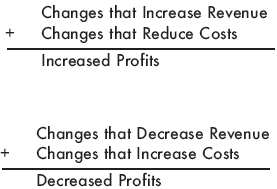Aquaculture, or catfish farming, is a complex and dynamic industry. New technology and new production techniques that promise higher returns or lower costs are constantly being introduced. Producers routinely find themselves in the position of evaluating whether or not a new investment or some other type of change to the existing operation will be worthwhile. In evaluating a proposed change to an existing aquaculture operation, the basic issue to be addressed is whether or not the long-term profitability of the farm will be improved. In evaluating these long-term effects, a partial budget can be a very useful tool for fish farmers, lenders, and Extension specialists.
Elements of a Partial Budget
Basically, a partial budget is made up of four components: two components identify changes in the operation that will increase profits, and two components identify changes in the operation that will decrease profits. Interpreting the results of a partial budget is very simple. If increased profits exceed decreased profits, then the change being considered is likely to be positive in terms of profitability. A basic outline of a partial budget would look something like this:

The difficulty in applying a partial budget to a particular problem is in accounting for all cost and return changes that will result. Each profit-changing item must be included to determine whether or not the proposed change to an operation will be profitable. This means that a reasonably complete itemization of changes to the operation’s income and expenses must be developed. In some cases, this is a relatively simple matter; however, for more complex changes in the production process, defining all of the changes that will occur can be difficult. Moreover, realistic dollar amounts must be associated with each of these changes. It is, therefore, very important to carefully consider how any proposed change to an operation will affect revenue items, such as total production, and expense items, such as labor and equipment requirements, feed use, and utilities. In many cases, information from university research or demonstration projects will be available to help with this step in the budgeting process.
A Partial Budget Example for East Mississippi Catfish Producers
Analysis of Purchasing 6-Inch Fingerlings for Growout OR Purchasing 3.5-Inch Fingerlings and Growing to 7- and 8-Inch Stockers for On-Farm GrowoutTo view the full report (PDF) click here
A Partial Budget Example for Delta Mississippi Catfish Producers
Analysis of Raising Catfish in a Multiple-Batch Production System OR a Three-Phase Modular Production SystemTo view the full report (PDF) click here
April 2007

